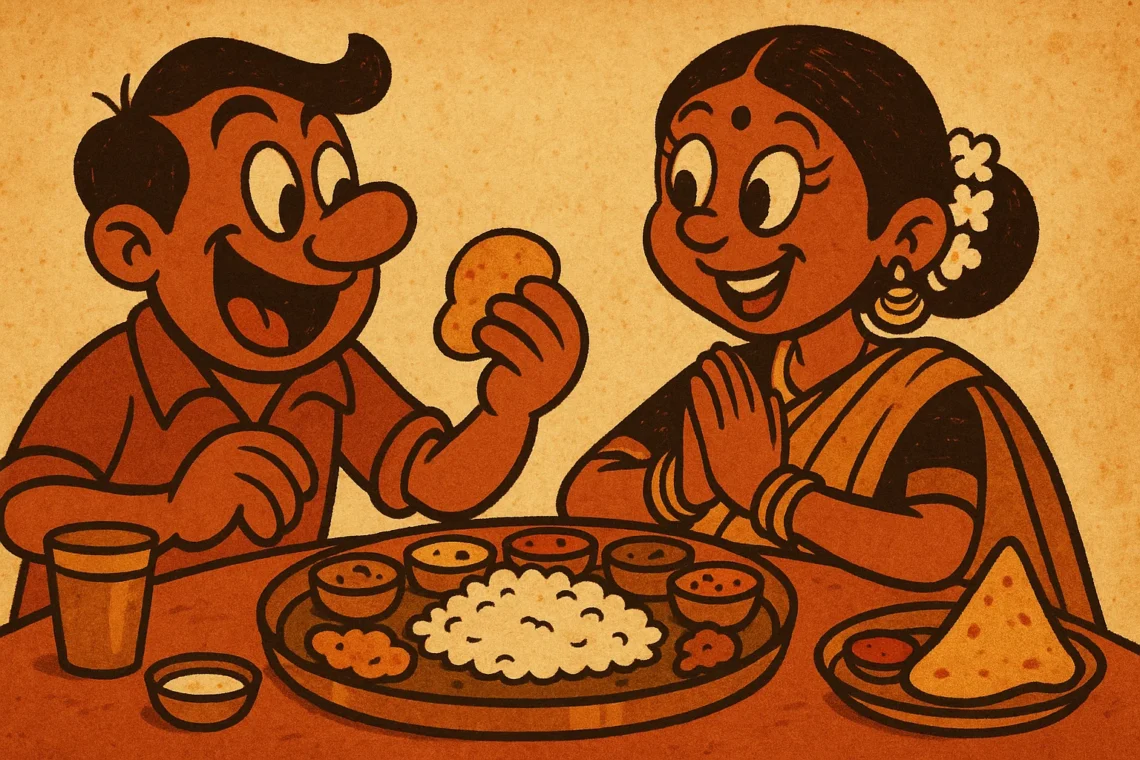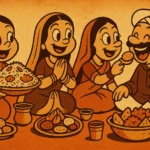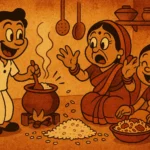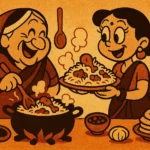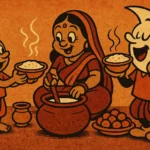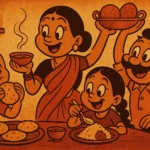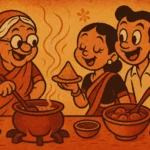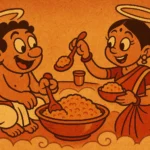Ask someone what India tastes like, and they might say spice. Or mango. Or chai. But the real answer? A thali. Not just one kind, but a hundred kinds—each a plated postcard from a different corner of the country. A thali isn’t just lunch or dinner. It’s identity served in circles. A map drawn in katoris and ladles. A ritual that says: this is who we are, and this is how we eat.
Thalis are not about extravagance. They are about balance. Every item on the plate plays a part—sweet, sour, spicy, crunchy, soft, hot, cold. And more than just a meal, a thali is a performance. One that starts long before you sit down to eat. It begins in kitchens warmed by wood-fired stoves, in temple corridors during festivals, and under wedding pandals where the smell of ghee is more reliable than the DJ.
West: Where Sweet Meets Spice
Take Gujarat. The thali arrives like a cheerful guest who brings everything. You’ll find soft rotlis, sweet dal, spicy shaak (vegetables), khichdi, kadhi, and at least two kinds of chutneys—all accompanied by a smiling auntie who insists you have “just one more puri.” What stands out here is the interplay of sugar and chili. Even the dal is sweet. And no matter how full you are, there’s always room for shrikhand or mohanthal. To say no is not impolite—it’s unthinkable.
Maharashtra, on the other hand, gives you earthy comfort: bhakri, varan, pitla, the crunch of sabudana, and the holy trinity of thecha, chutney, and lime wedge. The thali here is rugged, honest. A meal that’s as much about soil and season as it is about skill. You taste the monsoon in the kanda bhaji, the summer in aamras, and tradition in every spoonful of varan-bhaat.
South: Where Every Bite Has a Sequence
A South Indian thali doesn’t just feed you—it educates you. There is an order, an etiquette. You begin with a payasam or something sweet, then move through dry vegetables, sambhar, rasam, curd, and finish with buttermilk. Each dish has a lane on the banana leaf. Each bite has a direction. Rice isn’t served—it’s mounded like a small hill. And refilled endlessly.
Andhra brings the heat, Tamil Nadu the depth, Kerala the coconut-rich softness, and Karnataka a touch of elegance with kosambari and majjige huli. The banana leaf isn’t just eco-friendly—it’s symbolic. A living canvas. And after the meal, you fold it inwards, toward yourself, as a sign of satisfaction. Fold it outward, and you’re declaring displeasure. These are not just meals. They’re gestures with grammar.
East: Where Simplicity Shines Bright
Bengal’s thali dances between nostalgia and surprise. A mound of rice in the center, flanked by shukto, dal, bhaja (fried vegetables), and at least one fish curry—often begun with bitter neem leaves fried with eggplant and ending with something sweet, usually mishti doi or sandesh. A Bengali thali is not hurried. It unfolds like a raga, each note meant to be savored.
Odisha keeps it minimal but meaningful—saaga, dalma, pakhala bhaat in summers, and occasional servings of temple-style food that feels half-spiritual, half-gastronomic. And in the Northeast, the thali moves into bamboo and fermented flavors: axone, boiled herbs, smoked meats, sticky rice. Less oil, more fire. These are plates built from forests and rivers, telling stories you don’t hear in mainstream cookbooks.
North: The Land of Gravies and Ghee
A North Indian thali is comfort in layers. Think stuffed parathas, creamy dals, paneer gravies, sabzis swimming in tadka, and a cold bowl of boondi raita balancing it all out. Every bite is rich, often slow-cooked, and layered with spice. Pickles here are bold—mango, chili, even garlic. The breads vary: naan, tandoori roti, phulka, or missi roti. And no thali ends without something dripping in syrup—gulab jamun, jalebi, or the humble halwa.
Kashmir brings in its own vocabulary: haak, nadru, dum aloo, and if you’re lucky, a waazwan-style serving. Punjab offers buttery gravies, smoky tandoori edges, and glasses of lassi so heavy they count as a fourth course. The North doesn’t whisper flavor—it sings it, loud and proud.
Thalis in Temples, Weddings, and Train Journeys
And then there are the thalis you remember not just for their ingredients, but for where they came from. The temple thali after a long wait in line, served on a leaf with absolute humility and precision. The wedding thali where you pace yourself carefully to survive the thirty dishes being served in a sequence by men moving faster than waiters at a five-star brunch. The thali in a train—a bit of dal, some rice, a chapati folded in foil, and a spoon you can bend with your fingers. Basic, but somehow satisfying. Because the setting changes the flavor.
A Plate Full of Belonging
What a thali really gives you is not just food—but context. It tells you about the land, the weather, the crop cycles, the festivals, the family traditions. A Gujarati thali without jaggery is incomplete. A Tamil thali without curd is sacrilege. A Punjabi thali without ghee is just sadness. The thali isn’t just regional—it’s deeply personal. And fiercely proud.
So the next time someone asks you where you’re from, skip the pin code. Describe your thali instead. Tell them about the chutneys you can’t live without, the order you eat in, the one sabzi that only your mother gets right. Because when you think about it, the thali isn’t just on the plate—it’s in the people, the rituals, and the memories it holds.
Born in Mumbai, now stir-frying feelings in Texas. Writes about food, memory, and the messy magic in between — mostly to stay hungry, sometimes just to stay sane.

